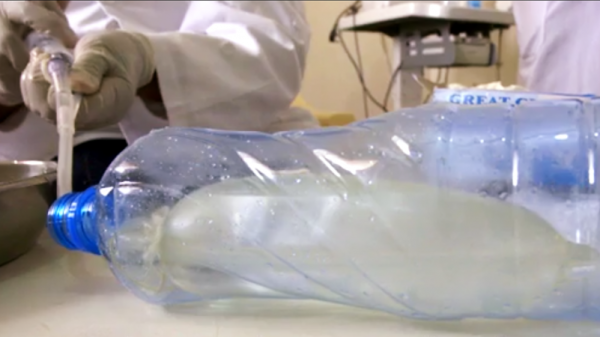The title is sure to draw a snicker from some readers, but the purpose of this field-expedient treatment for postpartum hemorrhage is deadly serious, and a true medical hack that has the potential to save the lives of new mothers.
Postpartum hemorrhage is the leading cause of death during pregnancy, claiming about 86,000 women every year. While it can occur up to six weeks after giving birth, PPH is most serious immediately after delivery and can require aggressive treatment to prevent hypovolemic shock and eventual death. A fully equipped obstetrical suite will have access to an array of medications and devices to staunch the flow, including a uterine balloon tamponade (UBT) kit. But at $400 a kit, these devices are hard to come by in the developing world.
Not to be dissuaded, midwife [Anne Mulinge] from Nairobi, Kenya created a simple, cheap substitute using common items. A common urinary catheter is covered with an ordinary condom, the end of which is secured around the catheter with twine. Once inserted into the woman’s uterus, the condom is filled with saline solution through the catheter, expanding the condom and applying direct pressure to the bleeding uterine walls. The pressure allows the mother’s clotting mechanism to catch up with the decreased blood flow.
So far, [Anne] claims the device has saved three new mothers, and other midwives are being trained in the technique. Here’s hoping that more lives are saved with this simple hack, and perhaps with this more complex one designed to get blood to remote clinics as fast as possible.
Thanks to [LP Bing] for the tip.

















